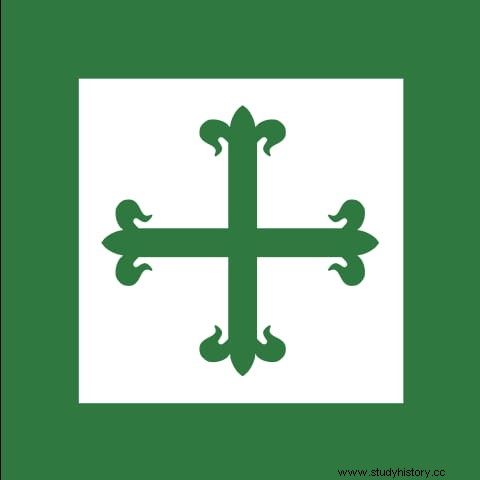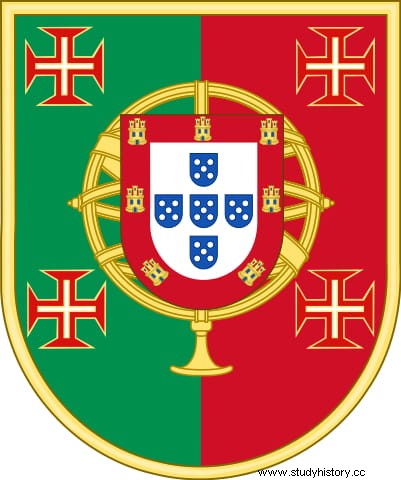In 1926, in the midst of an unstable crisis situation in all aspects (political, economic and social), a coup d'etat in Portugal he overthrew the republican regime that a decade and a half earlier had managed to expel King Manuel II. Thus, a military dictatorship was established. known as the National Revolution that six years later handed over power to Antonio de Oliveira Salazar ; He was an ex-seminarian and university professor who had been part of the new government as Minister of Finance but who had resigned shortly after not being able to apply his program, although he did not take long to return. His applauded work in that portfolio and his ability to move in the political ins and outs prompted him to end up assuming the position of prime minister .
At the head of the executive he developed what he called Estado Novo :a regime slightly inspired by Mussolinian fascism, based on the single party (National Union), intense nationalism and the concentration of power in his person, something that ended up identifying the process as Salazarism . His ideological affinity led him to authorize the participation of a small military expeditionary force in the Spanish Civil War supporting Franco:the figures are not clear but it is estimated between 8,000 and 12,000 volunteers who were known as viriatos .
In 1939 hostilities ended in Spain and began in Europe with the outbreak of the Second World War . Salazar, who personally assumed the Foreign Affairs portfolio, was ideologically aligned with the Axis powers but the traditional good relations with Great Britain and the memory of the consequences of participation in the First World War, made him opt for the neutrality . The so-called Iberian Pact with the Francoist government formalized the creation of an Iberian Bloc that not only kept the two peninsular countries on the sidelines of hostilities but also reassured Lisbon in the event that Spain occupied Portugal supported by Germany to control the Atlantic.

However, there was a clearly Germanophile current that defended alignment with Hitler and was led by the Portuguese Legion , a paramilitary organization promoted by the government in 1936, virulently anti-communist and that brought together some twenty thousand members. As in Spain, when the Germans began Operation Barbarossa (the invasion of the USSR), enthusiasm was aroused in that militia. And the approval of the Franco regime to the creation of the Blue Division , a military contingent that was to go to the Soviet country to fight as part of the Wëhrmacht under the cry «Russia is guilty!» , meant that several former viriatos enlisted enthusiastically.
They were not many. According to the records, the number remained at 76 , quite small considering that the Portuguese Legion had at that time 53,000 members. Of these volunteers, 22 were from Lisbon, 14 from Porto, 8 from Portoalegre, 8 from Viana, 3 from Évora, 3 from Viana do Castelo, 2 from Beja, 2 from Braga, 2 from Coimbra, 2 from Faro, 2 from Setúbal , 1 from Castelo Branco, 1 from Guarda, 1 from Leiria and 1 from Madeira. Almost all of them were very young, between 18 and 20 years old (despite the fact that the regulations of the Blue Division prohibited registration with less than twenty) and none exceeded 40. For the most part they exercised common trades with some exceptions (a university student, a writer...).

Within the division they were grouped under the name, somewhat pretentious given their meager numbers, Green Legion and together with their Spanish companions they traveled to the Leningrad front in the second half of 1941, entering the fray around Lake Ladoga. In the famous battle of Krasny Bor (February 10, 1943), in which some 5,900 divisionalists had to face tens of thousands of enemies, Portuguese legionnaires also participated. It was precisely in this combat that José Alberto Rodríguez Estévez, the only Portuguese prisoner, was captured. (he was in a gulag for eleven years, until 1954), which was added to the death of soldier Agustín Aveiro del Rosario, the only fatality of the Green Legion on the list of 4,000 fallen that day.
After deciding the suppression of the division and its return to Spain in the autumn of 1943, a part was left, the one made up of the most radical (2 thousand men), under the name of Blue Legion . But over time, at the beginning of the following year, it was also dissolved and its members decided to join the Waffen SS . Among them were fifty Portuguese, although, apparently, most of them were not legionnaires but residents in various parts of Europe. This was the final chapter of the Green Legion, although the seminal Portuguese Legion survived until the Carnation Revolution in 1974.
